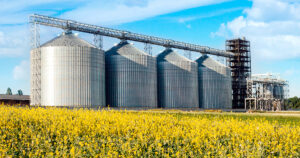
The market of elevator equipment in Ukraine has undergone dramatic changes over the past eight to nine years, with the share of Ukrainian equipment currently at 80% and foreign equipment at 20%, the press service of KMZ Industries reports.
The company noted that in 2016, the share of Ukrainian equipment was only 20%, and foreign equipment – 80%, and as of 2025, the situation is mirrored in key product segments.
“Ukrainian farmers have gradually rethought their approaches to choosing suppliers: they have tried domestically produced equipment and made sure that it is not only on par with imported equipment in terms of quality, but also has a number of additional significant advantages. These include service availability, design for climatic conditions, knowledge of the local context, and the manufacturer’s ability to work in war conditions on an equal footing with the client,” explained Natalia Kulakovska, Marketing Director at KMZ Industries.
She noted that the state program of partial compensation of 25% of the cost of Ukrainian-made equipment played a major role in this market transformation, which allowed farmers to “try their hand at it.” After the first purchase, most of them did not return to imported elevator equipment.
“According to an independent study, in 2024, the share of Ukrainian transport equipment for elevators was 48.8% in monetary terms. If we talk about metal storage silos, the growth is even more significant: in 2024, Ukrainian producers already owned 81.4% of the market. These are not just numbers – it is a proof of trust in domestic production and its ability to meet the modern needs of elevator storage infrastructure for agricultural producers and agro-processors,” Kulakovska summarized.
KMZ Industries is the largest manufacturer of elevator equipment in Ukraine and produces a full range of equipment, including silos, grain dryers, transport equipment and separators, as well as provides automation and installation services.
According to the company, it has built more than 5 thousand facilities. KMZ Industries has silos in operation with a total capacity of over 12.5 million cubic meters.
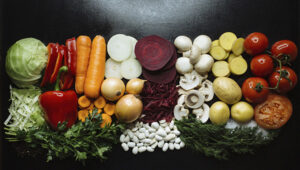
In January-June 2025, Ukraine imported $152.018 million worth of “borsch” vegetables, including potatoes, carrots, beets, cabbage, and onions.
According to statistics released by the State Customs Service (SCS), Ukraine increased its imports of potatoes by 7.9 times to 121.606 thousand tons during this period, purchasing them for $65.145 million, which is 6.9 times more than in the same period in 2024.
It is noted that in the first half of the year, 36.49% of the market of potatoes imported to Ukraine belonged to Poland, which was able to earn $ 23.77 million from its sale. At the same time, Egypt supplied 13.73% of the imported volumes for $ 8.945 million, the Netherlands – 11.66% for $ 7.594 million.
In January-June 2025, Ukraine slightly reduced onion imports by 1.1% to 15.747 thsd tonnes, spending $17.69 mln on the purchase of onions compared to $15.5 mln a year ago.
The top three suppliers of onions to Ukraine were China and Egypt, which accounted for 26.96% and 21.55% of imports, which in monetary terms amounted to $4.769 million and $3.812 million, respectively. The Netherlands closed the top three with a share of 18.85%, supplying this product for $3.335 million.
During this period, Ukraine imported cabbage 2.5 times more than a year ago – 47.252 thousand tons versus 18.969 thousand tons, respectively, spending 2.4 times more on its purchase than in the first half of 2024 – $42.075 million versus $17.804 million. Its main suppliers were Macedonia (33.3% of supplies worth $14.022 million), Poland (24.9% worth $10.481 million) and the Netherlands (13.47% worth $5.668 million).
In January-June 2025, Ukraine increased imports of carrots, beets and celery by 7.9 times compared to the same period last year – up to 43.065 thsd tonnes, spending $27.108 mln against $4.36 mln respectively.
The main suppliers of these goods were Poland, Moldova and the Netherlands, which accounted for 47.04%, 13.53% and 11.93% of the imported volumes, respectively. In monetary terms, these countries earned $12.752 million, $3.667 million and $3.235 million, respectively, from the supply of root crops to Ukraine.
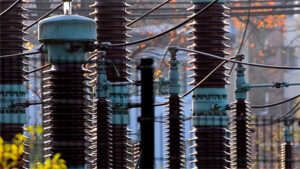
Imports of transformers, inductors, and chokes to Ukraine in January-June 2025 increased 2.6 times compared to the same period in 2024, reaching $494.2 million, according to statistics from the State Customs Service.
According to the published data, China remains the largest supplier of these products to Ukraine — during this period, $407.5 million worth of these products were imported (82.5% of all imports of these goods), while a year earlier, $103.9 million worth of transformers and chokes were imported from this country (53.7%).
In addition, transformers were imported from Germany ($28.8 million) and Turkey ($15.3 million), while in January-June 2024, imports from Turkey amounted to $38.4 million, and from the Czech Republic – $7.2 million. In particular, in June, imports of this equipment increased 3.6 times compared to the same month last year, and almost doubled compared to May this year, to $103.4 million.
At the same time, Ukraine exported transformers, inductors, and chokes worth $13.7 million in the first half of this year, compared to $8.6 million last year, mainly to Germany, Hungary, and Poland.
According to the State Customs Service, imports of transformers, inductors, and chokes to Ukraine in 2024 more than doubled compared to 2023, reaching $596.11 million. with imports from China increasing 2.5 times to $400.48 million.
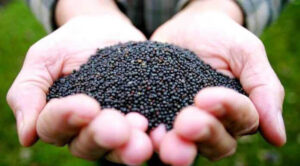
Ukraine exported 3.14 mln tonnes of rapeseed in the season-2024/25 (July 2024 – June 2025, marketing year, MY), down 15% compared to the previous marketing year and the lowest for the last three seasons, APK-Inform news agency reported.
The main reason for the decline, analysts said, was the decline in the oilseed harvest in Ukraine for several years in a row.
The experts pointed out that almost 89% of the total exports of rapeseed were to the European Union (91% in 2023/24 MY), or 2.78 mln tonnes, down 17% compared to 2024/25 MY. In terms of countries, the top three importers of Ukrainian rapeseed were Germany with the volume of over 1 mln tonnes (-18%), Belgium – 899 thsd tonnes (up 2.4 times), and the UK – 334 thsd tonnes (up 2.5 times).
“In the new season-2025/26, the downward trend of rapeseed exports is likely to continue, due to the expected minimum harvest of the crop in the last 4 years, as well as the possible introduction of the export duty for the oilseed, which is currently actively lobbied,” – the analysts said.
APK-Inform forecasts that in 2025/26 MY the exports of rapeseed from Ukraine will decrease by another 15%, to 2.7 mln tonnes.
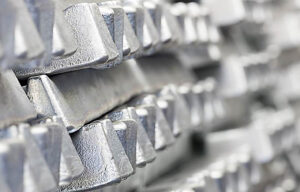
In January-May 2025, Ukraine imported aluminum and aluminum products worth $206.628 million, up 20.2% compared to the same period in 2024. In May, imports of aluminum products amounted to $40.340 million.
Over the same period, aluminum exports increased by 31.9% to $57.761 million. In May, the company exported products worth $12.698 million.
In 2024, aluminum imports amounted to $446.006 million (+21.7% compared to 2023), and exports amounted to $124.408 million (+27.4%). In 2023, Ukraine imported aluminum products worth $366.463 million and exported $97.616 million.

In January-May 2025, Ukrainian companies reduced imports of nickel and nickel products by 28% year-on-year to $7.976 million. In May, nickel products worth $3.071 million were imported.
At the same time, Ukraine’s nickel exports amounted to $443 thousand, which is almost twice as much as in the first five months of 2024 ($242 thousand). In May, exports amounted to $69 thousand.
For comparison: in 2024, imports of nickel products to Ukraine increased by 73.7% to $26.730 million, while in 2023 they amounted to only $15.391 million. Exports in 2024 amounted to $602 thousand, and in 2023 – $532 thousand.